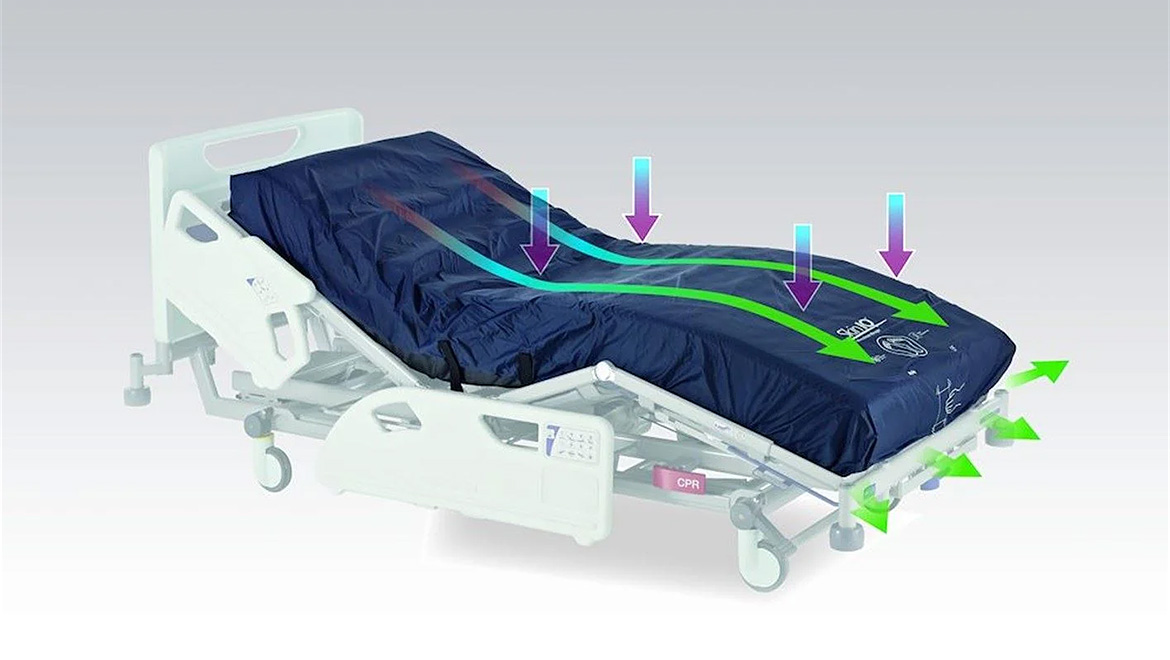Pressure injuries: the lives lost, the financial costs and a pathway to prevention.
In the US alone, 60,000 people die each year as a direct result of pressure injuries¹
The development of pressure injuries is associated with pain and discomfort, decreased quality of life, prolonged hospital stays, as well as increased morbidity and mortality. In the US, 60,000 people die each year as a direct result of pressure injuries,¹ and more than a quarter of ICU, and hospice patients can develop pressure injuries.²ᐨ⁴ There are 2.5 million patients affected each year.¹

The high cost of pressure injuries
Pressure injuries cost $9.1-$11.6 billion per year in the US. Cost of individual patient care ranges from $20,900 to $151,700 per pressure injury. In 2007 it was estimated that each pressure injury added $43,180 in costs to a hospital stay. More than 17,000 lawsuits are related to pressure injuries annually, and it is the second most common claim after wrongful death, and greater than falls or emotional distress.1
Hospital Acquired Conditions have decreased by 13%, but pressure injuries increased by 6%
While there was a decline in all Hospital Acquired Conditions (HAC), pressure injuries are the only HAC increasing (+6%), accounting for 27% of all HACs in 2017.5
However, it is estimated that 95 percent of all pressure ulcers are preventable6, and prevention rather than mere treatment remains a top priority in the effort to reduce the incidence of this common, complex and difficult problem.
Length of hospital stay doubles when a patient has a pressure injury
While the length of stay for all other conditions is about 5 days, it can be a lot longer with a pressure injury. When a person is diagnosed with a pressure injury, the length of stay is about 12.7 days, representing slightly more than double.1
As the number of patients requiring care continue to rise and care providers continue to cope with evolving challenges with limited resources, preventing hospital acquired conditions is not just a clinical concern, but also a financial and operational one.
Set a new standard of clinical excellence
As pressure injury prevention is a multi-faceted and complex challenge, efforts to improve prevention require a systemic approach and multi-component solution that might involve organisational change. We can support you in elevating the pressure injury pathway in your care environment by ensuring early and targeted risk assessment, delivering the appropriate intervention for your vulnerable patients, and driving clinical excellence and best practice.
Arjo Early and Targeted Intervention Kit (ETIK)
The Arjo Pressure Injury Prevention Solutions empower you with the ability to elevate the pressure injury prevention pathway in your care environment, equipping you with the knowledge, skills and tools to act on a new standard of clinical excellence in the early identification, prevention and management of pressure injuries.
We support you with multi-component interventions aligned with the latest evidence and international guidelines, including:
- Provizio® SEM Scanner, which ensures a 5-day*7 window of opportunity to deploy preventative intervention
- a comprehensive therapeutic support surfaces portfolio
- targeted repositioning and enhanced mobilisation solutions
- a multi-component intervention kit, including clinical consultancy and supporting customer implementation
Contact your local Arjo representative to find out more or book a demonstration.
*median
References:
- Agency for healthcare research and quality - Statistical Brief #64: Hospitalizations Related to Pressure Ulcers Among Adults 18 Years and Older, 2006. This resource can be accessed through the Healthcare Cost and Utilization Project: http://www.hcup-us.ahrq.gov/reports/statbriefs/sb64.jsp. ; [Accessed 22 Jul. 2021].
- Li Z, Lin F, Thalib L, Chaboyer W. Global prevalence and incidence of pressure injuries in hospitalised adult patients: A systematic review and meta-analysis. Int J Nurs Stud. 2020 May.
- Moore Z, Avsar P, Conaty L, Moore D.H, Patton D, & O’Connor T (2019) The prevalence of pressure ulcers in Europe, what does the European data tell us? Journal of Wound Care.
- Berlowitz D, Lukas CV, Parker V, Niederhauser A, Silver J, Logan Cet al. Preventing pressure ulcers in hospitals: a toolkit for improving quality of care [Internet]. Rockville (MD): Agency for Healthcare Research and Quality; 2014 [cited 2018 Oct 2].
- Agency for healthcare research and quality - AHRQ National Scorecard on Hospital-Acquired Conditions Final Results for 2014 Through 2017 https://www.ahrq.gov/hai/pfp/index.html ; [Accessed 22 Jul. 2021].
- Findlay D. Practical management of pressure ulcers. Am Fam Physician. 1996 Oct;54(5):1519-28, 1533-6. PMID: 8857777.
- Okonkwo H, Bryant R, Milne J et al. A blinded clinical study using subepidermal moisture biocapacitance measurement device for early detection of pressure injuries. Wound Repair & Reg 2020;1-11.
_Blog%20Image_PNG.png)



_Blog%20Image_PNG.png)
